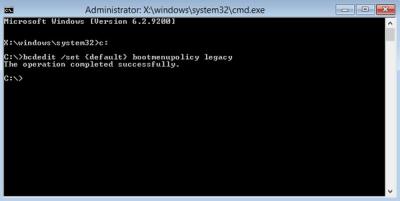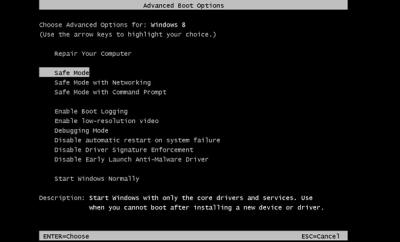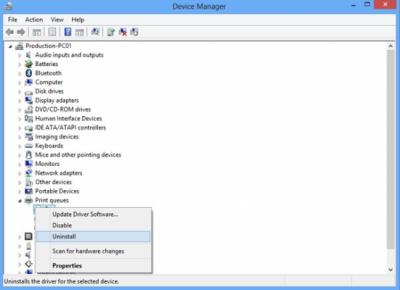-
-
products
-
resources
-
support
-
company
-
Login
-
ReviverSoft
Answers
Get Answers from our
Community of Computer Experts-
Home
-
Resources
-
Questions & Answers
- Why do I still get Driver Power State Failure error shutdown?
0 votes
00If you want to play some challenging games, go here to play fireboy and watergirl games without any download and the goal of the game is to collect all the diamonds and for the next to unlock the higher score Level to reach
0 votes
00Hi Christopher,
Driver Power State Failure is an error that is displayed in Blue Screen of Death (BSOD). This error is mostly displayed due to incompatible or inappropriate driver for any hardware device that a computer system may have.
A simple restart is often all that is required to resolve the issue. If the problem still persists even after the restart, the computer must be restarted in safe mode, and the problematic device driver must be uninstalled. Since Windows 8 does not allow users to press F8 or Shift + F8 during system startup to enter the advanced boot menu by default, administrators must enable legacy advanced boot menu manually before entering the safe mode. Once Windows 8 computer is started in safe mode, the problematic driver can be uninstalled to resolve the issue.
After uninstalling the problematic driver, its new and compatible version must be installed.
To enable legacy advanced boot menu in Windows 8, follow steps given below:- Restart the Windows 8 computer. Enter into the BIOS setup and configure the system to boot from CD/DVD Drive.
- Save the modified settings in BIOS and reboot the computer.
- Insert Microsoft Windows 8 bootable installation DVD into the optical media drive (CD/DVD Drive). When prompted to Press any key to boot from CD or DVD, press any key to boot the computer from DVD support.
- On the displayed Windows Setup box, click Next. On the next page, clickRepair your computer.
- On Choose an option screen, click Troubleshoot. On Troubleshootscreen, click Advanced options. On Advanced options screen, clickCommand Prompt.
- On the opened command line interface (CLI), type C: and hit Enter.
- On C: prompt, type BCDEDIT /SET {DEFAULT} BOOTMENUPOLICY LEGACY command, and press Enter to enable legacy advanced boot menu.

- Once the command executed successfully, type EXIT command to close the command line interface. Back on the Choose an option screen, click Continue to restart Windows 8 computer.
- Eject Windows 8 installation DVD from the optical media drive when done.
Fixing Driver Power State Failure Error:
In order to fix Drive Power State Failure error in Windows 8, the computer must be restarted in safe mode, and the problematic driver must be uninstalled. Follow below steps:- As the computer restarts, press F8 key continuously to display the Advanced Boot Options screen. On Advanced Boot Options screen, select Safe Mode by pressing down arrow and press Enter to start Windows 8 computer in safe mode.

- Once started in safe mode, log on to Windows 8 computer with the administrator account. Click Desktop tile from the Start screen to go to the desktop screen.
- Once on the desktop screen, hover mouse to the bottom right corner of the window. From the displayed options, click Settings. On the Settings pane, click Control Panel. On the opened AllControl Panel Items window, click Device Manager.
- On Device Manager Window, expand the category of the device that has some issues. Once expanded, right-click the driver of the problematic device that is to be uninstalled. From the context menu that appears, click Uninstall to remove the selected driver.

- On Confirm Device Uninstall box, click OK to confirm the uninstallation of problematic device driver. Wait till the selected driver is uninstalled and restart the Windows 8 computer normally.
- As the computer restarts, press F8 key continuously to display the Advanced Boot Options screen. On Advanced Boot Options screen, select Safe Mode by pressing down arrow and press Enter to start Windows 8 computer in safe mode.
Good Luck,
Lokesh.
Welcome to Reviversoft Answers
ReviverSoft Answers is a place to ask any question you have about your computer and have it answered by the expert community.Post your question
Ask your question to the community nowSimilar questions
I have had Driver Reviver since Jan 2013 and it just started giving me this error message today on October 6th, 2013.VIEW ANSWERS19Show full questionShow full questionUmiddelbart i forbindelse med registreringen 10 minutter efter tilsendelsen af licensnoegle.VIEW ANSWERS5Show full questionHaving trouble with your PC?Complete a free PC scan using Driver Reviver now.DownloadStart Free Scan -
